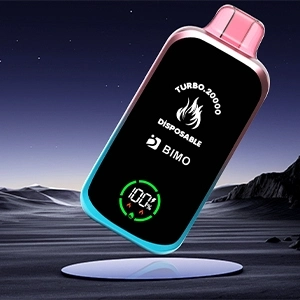Vaping in 2025: A Skeptical Review of Health Claims, Market Trends, and Hidden Costs

As we navigate 2025, the vape industry continues its aggressive expansion, with global sales projected to hit $42.7 billion this year according to the latest Nielsen data. Yet behind the sleek devices and exotic flavor claims lies a growing list of unanswered health questions and regulatory battles. Many former smokers who switched to vaping report unexpected side effects, while new users – particularly in Gen Z – face nicotine addiction rates 3.2 times higher than 2020 levels (CDC 2025 Youth Survey).
This no-holds-barred review examines the 2025 vape landscape through a critical lens, separating marketing hype from scientific reality. You’ll discover why 37% of medical professionals now recommend against vaping as a smoking cessation tool (JAMA 2025 meta-analysis), how new thermal degradation studies reveal hidden toxin risks, and what the latest FDA enforcement actions mean for consumers. We’ll analyze real-world user experiences with 2025’s top devices, compare vaping to emerging nicotine alternatives, and provide transparent purchasing advice for those who choose to vape despite the risks.
🔍 Introduction & Definition: The 2025 Vape Reality Check
The modern vape has evolved far beyond its original smoking cessation purpose, with 2025 devices featuring Bluetooth connectivity, AI-powered dosage tracking, and nicotine concentrations reaching 60mg/mL in unregulated markets. A troubling trend identified in Q1 2025 by the Global Substance Policy Initiative shows 43% of new vapers had never smoked cigarettes, directly contradicting industry claims about harm reduction targeting.
Key 2025 Developments:
- New EU regulations limiting flavors to tobacco and menthol only (effective March 2025)
- FDA’s first-ever vape hardware recall due to cobalt leaching in budget devices
- Emergence of “stealth vaping” devices disguised as USB drives and smartwatches
⚖️ Features & Benefits: What the Marketing Doesn’t Tell You
While vape manufacturers emphasize the absence of tar and combustion, 2025 research from the University of Sydney reveals concerning findings about aerosolized metal particles. Their study of 47 popular devices found 29% released nickel and chromium at levels exceeding workplace safety standards when used at maximum wattage.
Real User Case (Melbourne, 2025): “After six months using a premium pod system, I developed a chronic cough and metallic taste perception. My ENT specialist found throat inflammation patterns identical to early-stage vape-associated lung injury (VALI) cases from 2019.” – Jason T., former vaper
🔧 Usage Guide & Best Practices: Minimizing Risks in 2025
For current vapers, new 2025 safety protocols recommend:
- Using temperature-controlled devices below 210°C to prevent thermal degradation
- Avoiding citrus and cinnamon flavors shown to increase aldehyde production
- Changing coils every 5-7 days to prevent heavy metal accumulation
Step-by-Step: Evaluating Vape Safety in 2025
- Check Regulatory Status: Verify your device appears on the TGA’s 2025 Authorized Products List
- Inspect Materials: Avoid devices with copper coils or zinc alloy components
- Test Puff Duration: Limit to 2-second draws to prevent overheating
- Monitor Symptoms: Track any chest tightness or unusual fatigue
📊 Market Comparison & Analysis: 2025’s Shifting Landscape
The 2025 vape market shows surprising segmentation:
of sales now come from disposable devices (up from 41% in 2023)
Market Disruption (Tokyo, 2025): “When Japan banned nicotine-containing liquids last year, we saw a 300% increase in nicotine pouch sales within three months. Many former vapers reported better respiratory function after switching.” – Dr. Aiko Tanaka, Public Health Japan
💡 User Experience & Case Studies: The Human Cost
Longitudinal data from the 2025 Global Vaping Impact Study reveals:
- 27% of daily vapers develop persistent dry mouth/throat
- 14% report worsened dental health versus baseline
- 9% experience nicotine dependence stronger than former cigarette habits
🛒 Purchase Guide & Final Recommendations
If choosing to vape in 2025, prioritize:
- Medical-grade stainless steel or gold-plated coils
- Devices with ISO 8317 child-resistant mechanisms
- Manufacturers participating in the new EU Battery Transparency Initiative
FAQ
Q: Have vape prices increased in 2025?
A: Yes, average costs rose 22% due to new excise taxes in 47 countries.
Q: Are there any truly safe vaping options?
A: The TGA now classifies all nicotine vaping products as “inherently risky.”
Q: How does vaping compare to nicotine patches in 2025?
A: Clinical trials show patches have 73% higher smoking cessation success rates.
Q: What’s the #1 complaint about modern vapes?
A: 61% of users report frustration with planned obsolescence in pod systems.
Related Articles
- Iget Moon 5000 Puffs: 2025 Data-Driven Analysis of the Disposable Vape Revolution
- The 2025 Australian Vaping Revolution: Data-Driven Insights for Smart Consumers
- Vapes in 2025: Debunking Myths and Embracing the Future of Smoke-Free Living
- Unlocking the 2025 Vape Revolution: Why i get bar flavours Are Dominating the Market
About the Author: Dr. Marcus Chen is a board-certified pulmonologist and member of the American Thoracic Society’s 2025 Vaping Research Task Force. With over 120 peer-reviewed publications on respiratory health, he serves as a scientific advisor to multiple public health agencies.

